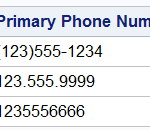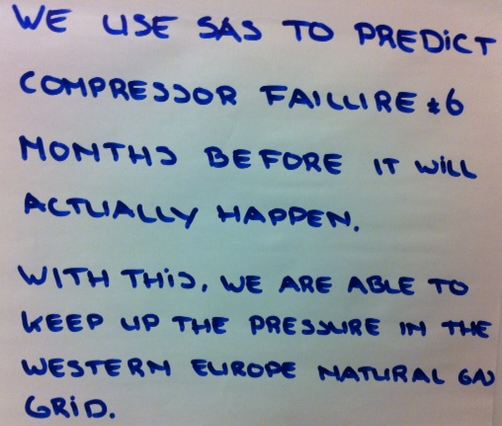All Posts

All too often an unspeakable tragedy leads to a needed policy or operational change through a newly-realized criminal justice system gap. While we continually work to minimize existing gaps, the reality is that as law enforcement evolves, so does the crime and so do the criminals. In recognition of those

SAS Global Forum 2012 is just around the corner, and even those who have attended for the past 36 years need guidance in what to do and see. I thought it might be good to create a little users guide for the event: A blog series that will showcase some
Recently we discussed the features of the Shiller Graph, showing long term housing values in the USA. To understand the features necesary in the SGPLOT procedure to create such graph easily, it was useful to see how far we can go using GTL as released with SAS 9.2(M3). I got the data Shiller Housing index data

Churn is a huge concern for insurers, credit card providers and telecommunications companies - even utilities. This Post-It Note author says that his company has found a way to reduce customer turnover - churn - by 10 percent using SAS Data Miner.
An issue that SAS/GRAPH users have wrestled with in the past has been how to put tick marks at irregular intervals on their axes. In PROC GPLOT, if you specify irregular intervals using the ORDER option on the AXIS statement, the procedure’s axis kicks into a “discrete” mode, where the

Sadly, SAS did not three-peat as the No. 1 Best Company to Work For on Fortune’s famous list, but from my point of view, SAS will always be No. 1. It’s not the Healthcare Center or the Pharmacy on campus. It’s not the daycare or the four cafés, also on

No, I’m not late posting this - early, actually. The Chinese New Year begins January 23. The 15-day celebration is a time to spend with friends and family and welcome longevity, good fortune, wealth and happiness. My husband visits China often for work, and some dear friends of ours just

Cities and counties are responsible for building and maintaining the infrastructure to support a broad range of services. Local governments must develop and implement multiyear capital projects plans that provide infrastructure for things such as jails, courts, public office buildings, streets, bridges, parks, athletic complexes and community centers, water treatment

Here at SAS Publishing, we’ve started the new year off with a bang, particularly when it comes to conferences. We’re attending a number of new shows in addition to the usual lineup this year. Visit our booth, meet our authors, check out our new and forthcoming titles, and talk with

Are you a SAS professional working in the insurance or financial services industry? Are you looking for a place where you can talk with others who work in the those industries? Would you like to get together and network, face-to-face, or share ideas and best practices for using SAS? There is now a SAS Users Group just for you;
Often it is useful to view multiple responses by a common independent variable all in the same plot. SGPLOT procedure and GTL support the ability to view two responses, one each on the Y and Y2 axes by one independent variable (X) in one graph. Yes, you can also have X

In the Star Wars movie, Obi-wan could just wave his hand, mutter a few words, and the stormtroopers would "move along". How the power of the Force makes ridding yourself of problematic characters so much easier! I recently was invited to become an alternate instructor for Ron Cody’s SAS Business

It's Friday the 13. That can conjure up all kinds of scary thoughts, or you might consider it a lucky day. Which is it for you? This SAS user doesn't rely on luck or chance with his or her important projects. SAS is used to predict failures and outages!

A’s in the front, Z’s in the back. How many of us grew up sitting in alphabetical order next to the same few classmates throughout school? While this is a quick and efficient way to learn student names, which is no easy task, it is not the most effective way
Recently a user posted a question on the SAS/GRAPH and ODS Graphics Forum about drawing a plot with custom confidence intervals . The user has a simple data set with category, response (mean) and custom lower and upper confidence intervals. The data looks like this: Robert Allison provided the code (proc gplot +







